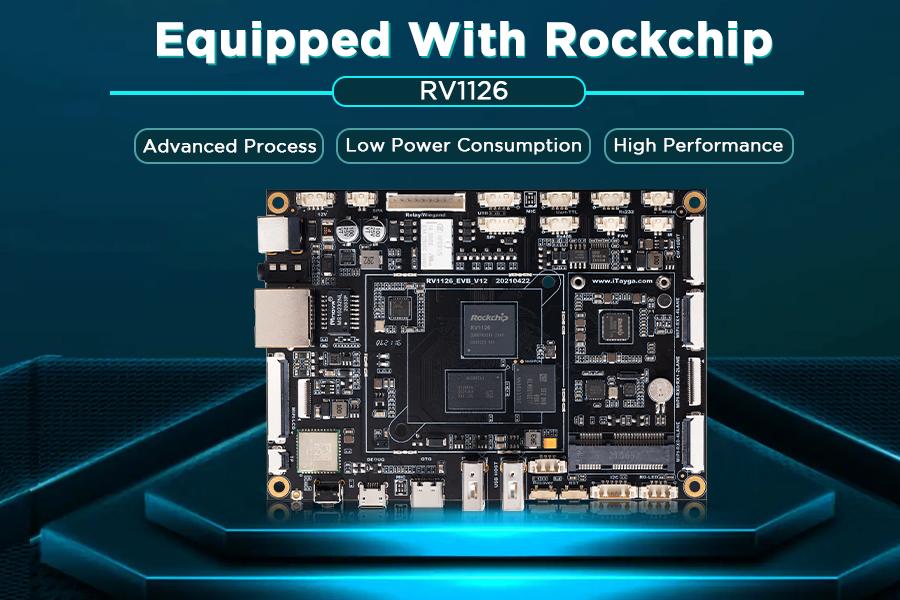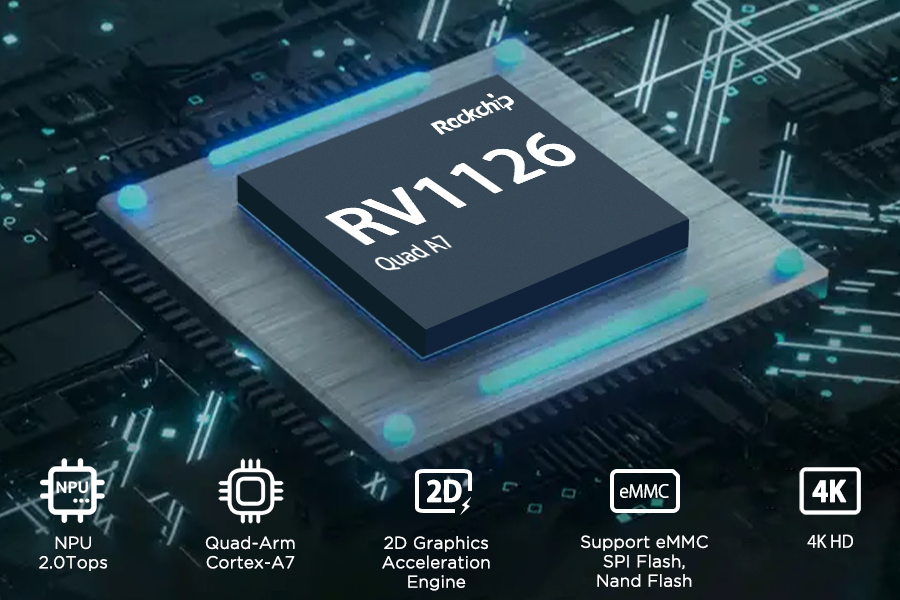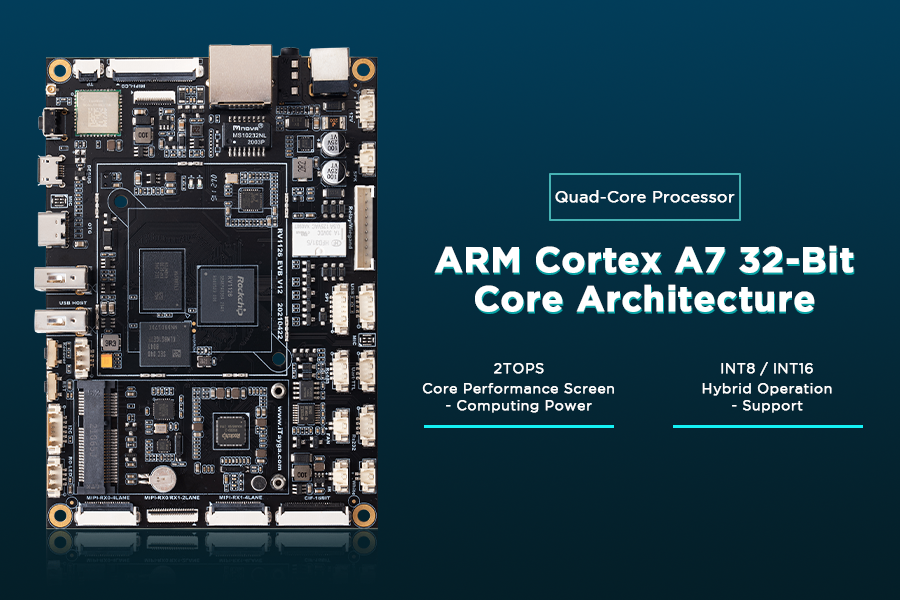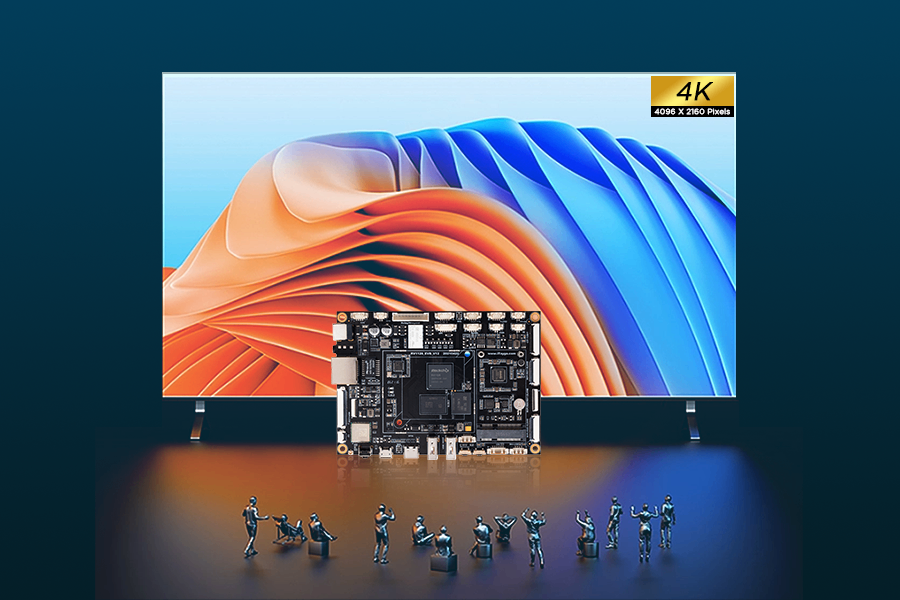Rockchip RV1126 high-performance vision processor SoC for IPC/CVR
Jul 11,2024

RV1126 is a high-performance vision processor SoC for IPC/CVR, especially for AI related application.
It is based on quad-core ARM Cortex-A7 32-bit core which integrates NEON and FPU. There is a 32KB I-cache and 32KB D-cache for each core and 512KB unified L2 cache.
The build-in NPU supports INT8/INT16 hybrid operation and computing power is up to 2.0TOPs. In addition, with its strong compatibility, network models based on a series of frameworks such as TensorFlow/MXNet/PyTorch/Caffe can be easily converted.
RV1126 also introduces a new generation totally hardware-based 14-megapixel ISP(image signal processor) and post processor. It implements a lot of algorithm accelerators usually used in IPC and CVR, such as HDR, 3A functions (AE, AF, AWB), LSC, 3DNR,2DNR, sharpening, dehaze, fisheye correction, gamma correction, feature points detection and so on. All of them are real-time processing. Cooperating with two MIPI CSI(or LVDS/SubLVDS) and one DVP(BT.601/BT.656/BT.1120)interface, users can build a system that receives video data from 3 camera sensors simultaneous.
The video encoder embedded in RV1126 supports UHD H.265/H.264 encoding. It also supports multi-stream encoding, up to one 4Kp30 and one 1080p30 simultaneous.
With the help of this feature, the video from camera can be encoded with higher resolution and stored in local memory and transferred another lower resolution video to cloud storage at the same time.
The H.264/H.265 video decoder in RV1126 supports 4Kp30 for H.264 and H.265.
In addition to the previous high-performance multimedia block, RV1126 also contains rich audio, memory and other peripheral interfaces such as 12C, SPI, PWM and so on.
These can help users add more sensors or other peripherals into whole system to improve flexibility and scalability.
RV1126 has high-performance external DRAM(DDR3/DDR3L/DDR4/LPDDR3/LPDDR4) capable of sustaining demanding memory bandwidths.

Equipped with vision chip, high performance and low power consumption
The RV1126 EVB is equipped with Rockchip's vision chip RV1126, which adopts the quad-core Arm Cortex A7 32-bit core architecture and integrates NEON and FPU; it supports a series of deep learning frameworks such as TensorFlow/MXNet/PyTorch/Caffe, which is rich in resources and easy to develop, meeting the different development needs of engineers. The platform has core technologies in the fields of neural networks, image processing, artificial intelligence, deep learning, SOC system power consumption optimization, face detection, image acquisition, and adaptive image technology.

Built-in independent NPU, AI is more efficient
It is generally believed that the higher the NPU computing power, the better. Is this true? In fact, high computing power will also bring higher power consumption and construction costs. In the face of lightweight application scenarios, high computing power and low utilization rate is a waste of resources.
RV1126 has a built-in independent NPU, providing 2TOPS computing power, supporting INT8/INT16 mixed operations, fully meeting the application of lightweight scenarios, and performing AI operations independently, which is more efficient, more accurate in function execution and less false alarms.

Support multiple video codecs, adapt to different display devices
RV1126 EVB supports multiple video codecs of H.265/H.264/MJPEG, supports multi-level video quality configuration and encoding complexity settings, supports 4K@30fps+1080p@30fps video encoding, maximum decoding 4K@30fps, and supports the same encoding and decoding; it can adapt to display devices with different original configurations, and the excellent encoding and decoding capabilities are combined with edge computing. While improving image quality, the video stream delay is lower, the real-time performance is stronger, and the bandwidth occupation and storage space are reduced, further reducing the applicati
